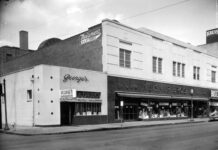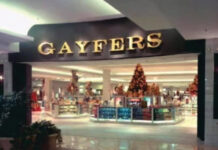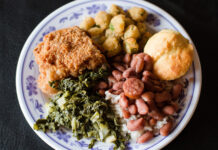
In the early 1960s, our city commissioners announced that there would soon be six parks or plazas, with each representing the six countries whose flags had flown over Mobile. Not all would be new. Bienville Square could symbolize the French. A planned park at Battleship Park could reflect the Alabama period while the aptly named Washington Square would represent the American period.
Two more newly built parks would reflect the British and Confederate eras. The plan, they explained, was to place a British park “in one of the urban renewal areas of downtown,” while they reasoned that the best location for one honoring the Confederate era would be in the vicinity of Catholic Cemetery since that is the final resting place of Admiral Raphael Semmes.
Spain would have a special plaza to act as a wide approach to the newly built Municipal Auditorium. The original proposal called for the closing of both South Franklin and South Hamilton streets to allow an even wider space.
The architect hired for the design was Dewey Crowder, Jr. (1923-2004). Some of his recognizable projects include St. Pius X Church on Sage Avenue, the rebuilt Central Presbyterian Church on Dauphin Street and the Riverview Plaza Hotel and office complex downtown.
Gifts from Spain
Much effort went into obtaining objects from Spanish cities for the space. Towering above the plaza was a statue of Isabella la Catolica, the first queen of a united Spain and the patron of Christopher Columbus. The original bronze sculpture by a Spanish sculptor was created to welcome visitors to the Spanish Pavilion at the New York World’s Fair in 1964.
While several accounts described the statue as coming from the World’s Fair location, the original has stood in front of the Organization of American States in Washington, D. C. since 1966. Mobile’s is a duplicate.
Mobile’s version had an added bonus. In the base of the pedestal was another replica: Queen Isabella’s gold and bronze scepter and crown. And, rather oddly beside these were two “gold and leather caskets” containing soil from her birth city and her gravesite.
Cordoba donated a replica of their “Little Colt” which holds their city’s coat of arms. Others shipped crates of colorful Spanish tiles with views of their cities to decorate 12 concrete benches.
Hamburger Arches
A circle of arches around the Spanish Plaza fountain were what the architect termed “10 Friendship Arches representing the 10 cities which contributed the most to the exploration and founding of this country.” In an interview, Crowder assured the reporter that his arches predated the golden symbol for McDonald’s “by several years.”
In March of 1968, a dedication ceremony took place which featured the bands of both the U. S. Navy and Coast Guard. A Spanish Festival on the ground floor of the International Trade Center featured displays of that nation’s “art, costumes, silver and brass.” A reception and banquet followed in the Crystal Ballroom within what was then operating as the Sheraton-Battle House.
Although described by the Mobile Register as “a real whingding,” regrets had been received from Alabama Governor Lurleen Wallace and Angier Biddle Duke, U. S. ambassador to Spain.
The Malaga Connection
In 1972, a southern extension south of Church Street was dedicated to the city of Malaga which had become a sister city to Mobile. That city’s mayor was present and “he planted a dogwood spring dubbing it the Malaga Dogwood.” He also presented the city with a replica of a statue of a traditional Spanish fishmonger carrying two baskets of fish. The original had recently been installed in his city.
Hurricane Frederic blew through the plaza in 1979, and Cordoba’s Little Colt was a sad casualty. City workers removed it and delivered it to a monument firm whose proprietor later admitted he had no idea how to repair it. The pedestal would stand empty for decades.
Then, in the early 1980s, someone noticed that Queen Isabella’s scepter and crown were gone. There was no mention of the caskets. A newspaper account noted that the bulletproof glass was intact but pockmarked. The open door had been secured with “a cheap lock.”
From Headache to a Jewel
City workers termed maintenance of Spanish Plaza as “a headache.” Tiles cracked from humidity and temperature changes not known in Spain, while vandals did the rest.
Thankfully, under Mayor Stimpson’s administration the course was reversed. New landscaping and updated lighting was installed. The cracked tiles surrounding the fountain were replaced and the water is splashing once again. Statues have been cleaned and the pedestal under Queen Isabella has been restored and holds a crown and scepter in a secure space. And the Little Colt was rediscovered and after a lengthy restoration has been happily returned to his rightful place.
The only thing missing from the original concept is the view of the Municipal Auditorium in the distance. It is under demolition from a wrecking crew and most recently an unusually heavy snowfall.
Only one of the other three projected parks ever came to be a reality. British Park has long been enjoyed by the residents of the Church Street East Historic District.





